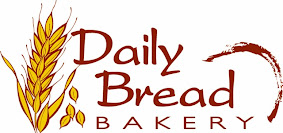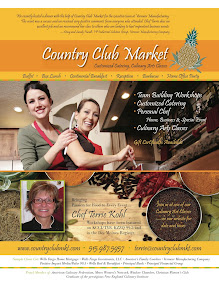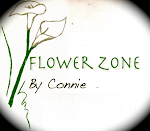 I am so full! I’ve just finished several platefuls of pici cooked two ways, panzanella, stewed beef, roast pork with potatoes, and more. I think I will never be ale to keep up with the Italian eating habits. The meals seems to last forever and if we didn’t insist we had somewhere to go, I am nearly certain that the meal would continue for hours and end only to begin the next meal.
I am so full! I’ve just finished several platefuls of pici cooked two ways, panzanella, stewed beef, roast pork with potatoes, and more. I think I will never be ale to keep up with the Italian eating habits. The meals seems to last forever and if we didn’t insist we had somewhere to go, I am nearly certain that the meal would continue for hours and end only to begin the next meal. This meal like, many of our meals in Tuscany was from a local restaurant, the special thing about today’s food was that . . .we made it.
As we walked into this tiny restaurant, a smiling face haloed with rusty-colored airy curls greeted us. As the woman in white hovered toward a table covered in fresh tomatoes and herbs the group eagerly tied our aprons round our waists. First on the list to create was Panzanella.
Panzanella is a salad of fresh tomato, herbs, olive oil and old bread that has been rehydrated with water. Here’s why this is a unique food to Tuscany. Tuscan bread is made without salt as remembrance to a boycott of salt when the taxes for it rose to an amount the locals refused to pay. This creates technique makes Tuscan breads taste a bit bland and have a texture that is a it irregular and crumbles easily. However there are some benefits to leaving out the salt. With no ingredient that collects and holds moisture Tuscan bread doesn’t mold. Instead it dries into what may feel and look like the perfect murder weapon to a perturbed cook. Traditionally, as fractions of loaves became too dry to serve they would be tied up in cloth and hung from the ceiling in a kitchen. To use these sachets of unwanted bread some cleaved Italian thought of adding water back into bread along with some fantastic fresh and flavorful ingredients.
To make this true delicious salad, all you will need is the following:
PANZANELLA
1/2 of a large loaf of old crusty bread that is now completely dry
A tub of water- enough to submerge the loaf
2 tbsp red wine vinegar
1 tsp salt
1 cucumber chopped
2 cups tomato chopped
1/2 red onion chopped
2 tbsp fresh parsley chopped
2 tbsp fresh basil chopped
Olive oil to taste- a few tablespoons
Salt
Pepper
Directions
- Dissolve salt in vinegar and add to tub of water.
- Add the bread and allow it to soak until the bread has softened.
- Picking up the loaf in pieces, squeeze out as much water as possible and crumble the bread into a large mixing bowl (the bread should be damp and crumble at this point and not mushy or soggy).
- Toss the bread with the remaining ingredients, being very generous with a good quality olive oil, salt, and pepper.
After the salad was finished, we moved into pasta making. In this region, pasta is made very differently than in other areas. The dough, rather than being made only eggs and flour, it is made of mainly water and flour with some egg. This makes a dough that is not rolled out flat and cut into pasta but is rolled between one’s fingers into a long spaghetti-like strand called pici. Look below for the recipe.
PICI
2 cups all purpose flour
2 cups semolina flour
1 egg
Water
2 tbsp olive oil
- Mix the two flours on your board (or in a bowl if you are more comfortable) and create a well in the center.
- In the well make a pool of the egg, oil, and water
- Using your first and second fingers, begin making small circles that gradually incorporate the flour into the wet mixture. I find it can be difficult to keep the wet mixture within the flour. The chef taught me this can be remedied by making the well wider as your go rather than keeping it tall and full. Spreading out the goo and flour into a wide shallow well is very effective.
- Once the mixture is incorporated it should be moist but not sticky. If it is too dry or too wet just add water or flour accordingly.
- Using your body weight take both hands and kneed the dough and strong motions. Do this until the dough is smooth and strong- about 20 minutes
- Now let the dough rest about 30 minutes- this allows the gluten, protein found in wheat, to relax. This makes a for a pasta that will be tender and soft rather than tough and chewy. Be sure you let your pasta rest!
- Next cut off small portions and roll back and forth between your fingers and palms. You can also roll the log by pressing and rolling on the cutting board.

NOTE -This style of rolling the pasta is very labor intensive and takes quite a while. IFYou can use a pasta cutter or rolling pin and a knife to cut this pasta so as to save time and effort if you wish.
The way Chef Gina dressed our pasta was simple and classic to the region, Sugo di Pomodoro e Basilico Fresco (fresh tomatoes and basil). To dress your pici in the same way you will need:
2 cups fresh roma or plum tomatoes -any ripe and fleshy tomato will do
2 cloves garlic
Olive oil- to taste
2 Tbsp fresh basil, chopped or torn roughly
Salt
Parmigiano cheese
Gently saute the garlic in the olive oil until soft. Add the tomatoes and cook for five minutes more adding salt to taste. Add the chopped basil and toss with pasta and top with shards of parmigiano.
Surprisingly I had no trouble eating all this food. It just was so delicious and all the wonderful wine seemed to assist me in eating more of it. I hope these recipe help you all have just a taste of Italy back home. With the abundance of fresh produce available now, you will have no problem achieving the taste of Tuscany. Just remember to keep it ripe and simple using plenty of good olive oil and time. Good luck and happy cooking!
If you have any questions please feel free to leave comments and I’ll do my best to answer them of send your question on the Chef Gina who will definitely be able to answer you.
































